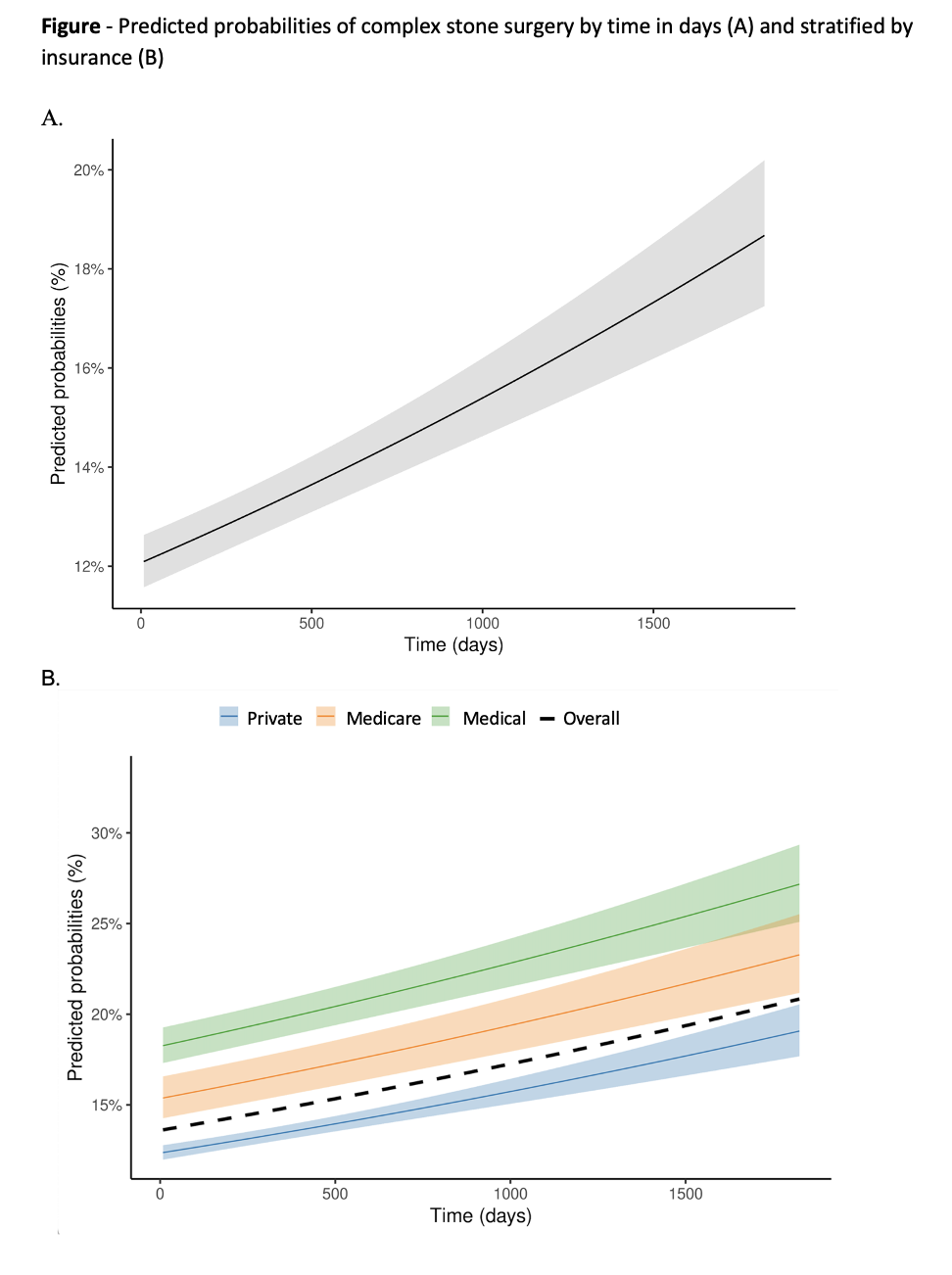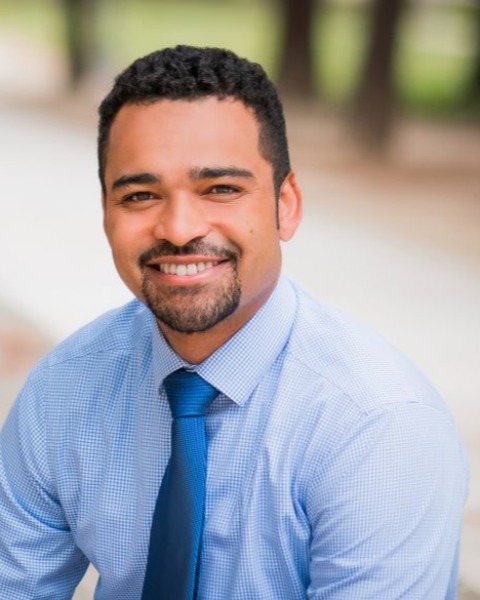Back
Introduction: Prior literature has elucidated increased stone burden and higher rates of staged surgery in individuals of lower socioeconomic status (SES). Low SES individuals are more likely to experience delays in definitive stone surgery after presenting to an emergency department (ED). The objective of this study was to investigate the relationship between delays in definitive surgery for kidney stones and the subsequent need for complex surgical procedures using a statewide dataset.
Methods: In this retrospective cohort study, longitudinal data from 2009-2018 was gathered using the California Department of Health Care Access and Information dataset. Patient characteristics, diagnosis codes, procedure codes and distance were analyzed. Complex stone surgery was defined as initial PNL and/or undergoing more than 1 procedure within 365 days of initial intervention (mean interval between procedures = 60 days).
Results: A total of 1,816,093 billing encounters from 947,798 patients were screened, resulting in 45,764 patients with ED visits for kidney stones followed by a urologic stone procedure. On multivaraite analysis, relative to patients who underwent surgery within 1 month, there was a significantly increased odds of undergoing complex surgery for patients waiting =6 months (OR 1.20, p=0.004), =1 year (OR 1.29, p<0.001), and =3 years (OR 1.43, p<0.001). Using time as a continuous variable revealed 0.03% increase in odds of undergoing complex surgery for every one day delay in (p < 0.001). Insurance status at the time of ED visit was also predictive of complex stone surgery with Medicaid (1.57, 95% CI: 1.46-1.69) and Medicare (OR: 1.28, 95% CI: 1.17-1.41) showing significantly higher odds relative to Private insurance (p < 0.001). Living more than 10 miles from the hospital was associated with 11% increase in odds (p < 0.001). Each one point increase in CCI was associated with a 10% average increase in odds of undergoing complex surgery (p < 0.001).
Conclusions: Delays in surgery for kidney stones are associated with an increased likelihood of undergoing a complex stone treatment. Complex surgery was also more likely among non-privately insured patients, patients living further from the surgery facility, and patients with more comorbidities. SOURCE OF
Funding: UCSF Department of Urology

Moderated Poster Session
Session: MP16: Stone Disease: Epidemiology & Evaluation I
MP16-04: Effects of Delayed Surgical Intervention Following ED Presentation on Stone Surgery Complexity
Friday, April 28, 2023
1:00 PM – 3:00 PM CST
Location: S405

David Bayne, MD, MPH
UCSF
Poster Presenter(s)
Introduction: Prior literature has elucidated increased stone burden and higher rates of staged surgery in individuals of lower socioeconomic status (SES). Low SES individuals are more likely to experience delays in definitive stone surgery after presenting to an emergency department (ED). The objective of this study was to investigate the relationship between delays in definitive surgery for kidney stones and the subsequent need for complex surgical procedures using a statewide dataset.
Methods: In this retrospective cohort study, longitudinal data from 2009-2018 was gathered using the California Department of Health Care Access and Information dataset. Patient characteristics, diagnosis codes, procedure codes and distance were analyzed. Complex stone surgery was defined as initial PNL and/or undergoing more than 1 procedure within 365 days of initial intervention (mean interval between procedures = 60 days).
Results: A total of 1,816,093 billing encounters from 947,798 patients were screened, resulting in 45,764 patients with ED visits for kidney stones followed by a urologic stone procedure. On multivaraite analysis, relative to patients who underwent surgery within 1 month, there was a significantly increased odds of undergoing complex surgery for patients waiting =6 months (OR 1.20, p=0.004), =1 year (OR 1.29, p<0.001), and =3 years (OR 1.43, p<0.001). Using time as a continuous variable revealed 0.03% increase in odds of undergoing complex surgery for every one day delay in (p < 0.001). Insurance status at the time of ED visit was also predictive of complex stone surgery with Medicaid (1.57, 95% CI: 1.46-1.69) and Medicare (OR: 1.28, 95% CI: 1.17-1.41) showing significantly higher odds relative to Private insurance (p < 0.001). Living more than 10 miles from the hospital was associated with 11% increase in odds (p < 0.001). Each one point increase in CCI was associated with a 10% average increase in odds of undergoing complex surgery (p < 0.001).
Conclusions: Delays in surgery for kidney stones are associated with an increased likelihood of undergoing a complex stone treatment. Complex surgery was also more likely among non-privately insured patients, patients living further from the surgery facility, and patients with more comorbidities. SOURCE OF
Funding: UCSF Department of Urology

